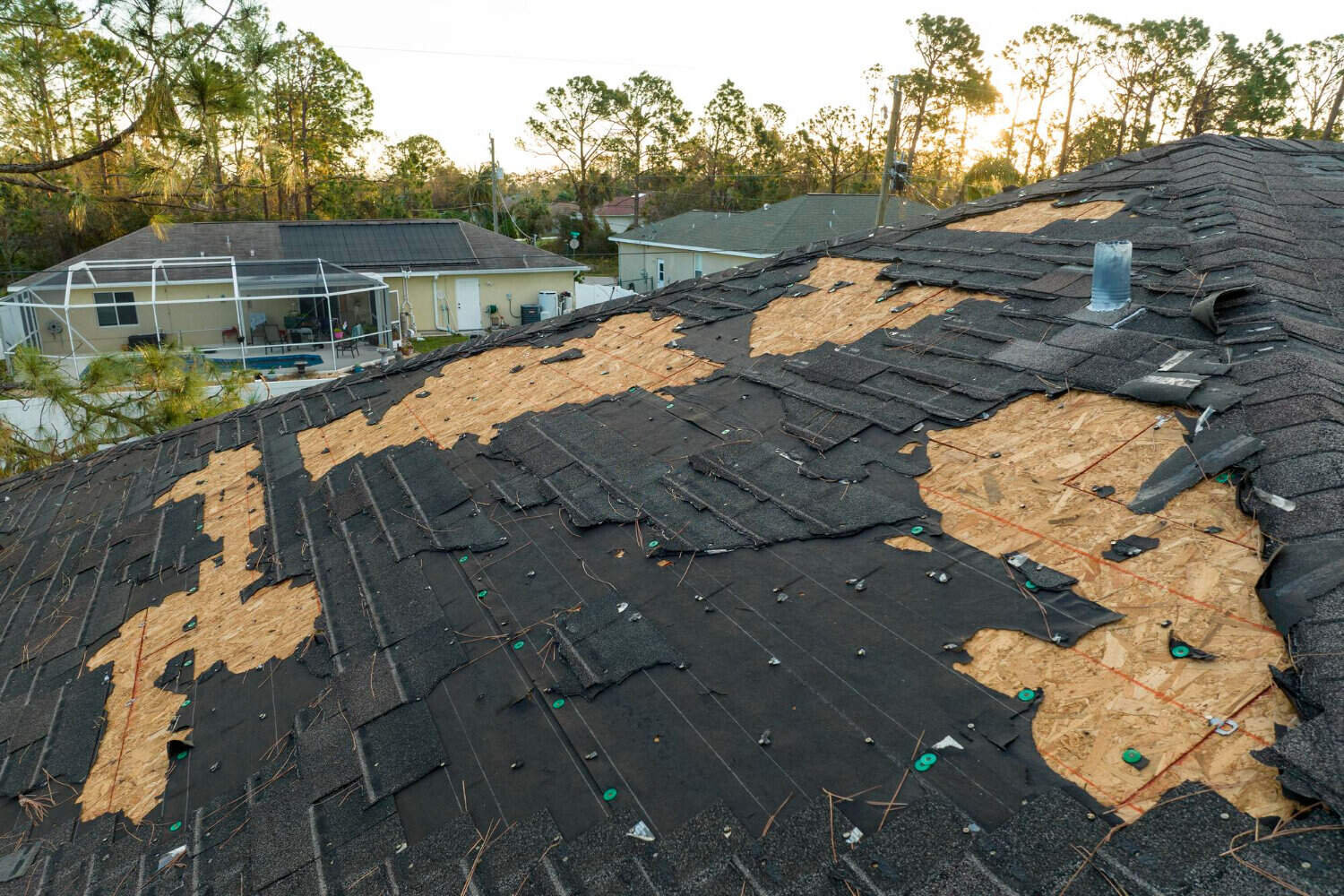
Storms can be tough on your home, especially your roof. After a storm hits, it’s essential to check your roof for any damage. This helps prevent minor issues from becoming big problems and ensures your home stays safe and dry. Knowing what to look for and how to examine different parts of your roof can save you time and money.
In this article, we’ll guide you through the steps to check your roof for problems after a storm. From ground inspections and attic checks to climbing up and knowing when to get help, each section will offer you practical tips to keep your roof in top shape.
Inspecting the Roof from the Ground
The first step in checking your roof after a storm is inspecting from the ground. This method is safe and can reveal a lot about the state of your roof without needing a ladder. Here are the main things to look for:
1. Missing Shingles: Scan the roof for any gaps or bare spots where shingles may have been blown off. Missing shingles can lead to leaks and further damage if water gets in.
2. Debris on the Roof: Look for branches, leaves, or other debris that may have landed on your roof. Heavy debris can damage shingles or even puncture the roof, leading to significant problems.
3. Gutters and Downspouts: Check the gutters and downspouts for signs of shingle granules. Granules wash off when shingles get damaged, and finding them in your gutters is a clue that the roof needs attention.
4. Sagging or Uneven Roof Line: A roof should appear straight and solid. Any areas that seem to sag or have an uneven appearance may indicate structural damage or water pooling underneath.
By checking these aspects from the ground, you can spot potential problems early and determine if a closer inspection is warranted.
Checking the Attic for Signs of Damage
Checking the attic is another crucial step in identifying roof problems after a storm. The attic can reveal hidden issues that aren’t visible from the outside. Here’s what to inspect:
1. Leaks and Water Stains: Look for signs of water damage, such as damp spots, water stains, or mold on the walls, insulation, and ceiling. Water intrusion can lead to mold growth and structural damage.
2. Light Penetration: In a dark attic, look for rays of sunlight coming through the roof boards. If light can get in, so can water. This is an indication of holes or gaps in the roof.
3. Damaged Insulation: Check the insulation for wetness or damage. Wet insulation loses its effectiveness and can also be a sign of leaks. Replace any damaged insulation to maintain energy efficiency.
4. Ventilation Issues: Proper attic ventilation is essential to the health of your roof. Check that vents are not obstructed by debris and are allowing air to circulate freely. Poor ventilation can lead to heat and moisture build-up, causing premature roof deterioration.
By conducting a thorough attic inspection, you can catch hidden roof problems early, preventing more serious damage and costly repairs down the line.
Climbing Up: What to Look for on the Roof
If you’re comfortable and it’s safe to do so, climbing up to inspect your roof can give you a closer look at potential storm damage. Here are key things to check:
1. Shingle Condition: Look for cracked, curled, or missing shingles. Check if any shingles are loose. Damaged shingles can weaken your roof’s ability to protect your home from the elements.
2. Flashing and Seals: Inspect the metal flashing around chimneys, vents, and skylights. Look for gaps, cracks, or rust. Flashing helps direct water away from seams and joints, so any damage here can cause leaks.
3. Gutters and Downspouts: Ensure gutters are securely attached and free of debris. Check for any sagging sections or leaks. Properly functioning gutters divert water away from your roof and foundation, preventing water damage.
4. Check for Debris: Remove any debris that’s accumulated on your roof. Items like branches and leaves can trap moisture, leading to rot and mold growth over time.
Remember to use caution when climbing your roof. Wear appropriate footwear and consider using a safety harness. If you feel uneasy or the roof is too steep, it might be best to leave this step to a professional.
Addressing Storm Damage: When to Call a Professional
Sometimes, storm damage is too significant to handle on your own. Knowing when to call a professional can save you time and prevent further damage. Here are scenarios where you should seek expert help:
1. Visible Structural Damage: If you notice any sagging, large holes, or significant damage to the underlying structure, call a professional immediately. Structural issues require expert repair to ensure safety.
2. Extensive Shingle Loss: If many shingles are missing or damaged, a professional roofer can provide a thorough inspection and replace them to prevent leaks and further deterioration.
3. Water Leaks Inside the Home: Persistent water leaks or stains on the ceilings and walls are a clear sign that there’s a serious issue. A professional can identify the source and fix it properly.
4. Metal Flashing Damage: Damaged flashing around vents, chimneys, or skylights should be repaired by an expert to ensure it properly directs water away from potential entry points.
5. Inaccessible Damage: If parts of your roof or attic are hard to reach or inspect, a professional roofer has the tools and expertise to safely handle the inspection and repairs.
Conclusion
Checking your roof for damage after a storm is vital to maintaining the safety and longevity of your home. Starting with a ground inspection, moving up to checking the attic, and finally, getting up on the roof can help you identify various types of damage. While some minor issues can be tackled on your own, significant damage or hard-to-reach areas should be assessed by professionals to ensure thorough and safe repairs.
If you need expert assistance, My Jockey’s residential HVAC and plumbing services serving Saratoga Springs and The Capital Region, NY, have got you covered. Our professionals are ready to help you ensure your roof remains in top condition. Don’t wait—give us a call today!

No comment yet, add your voice below!